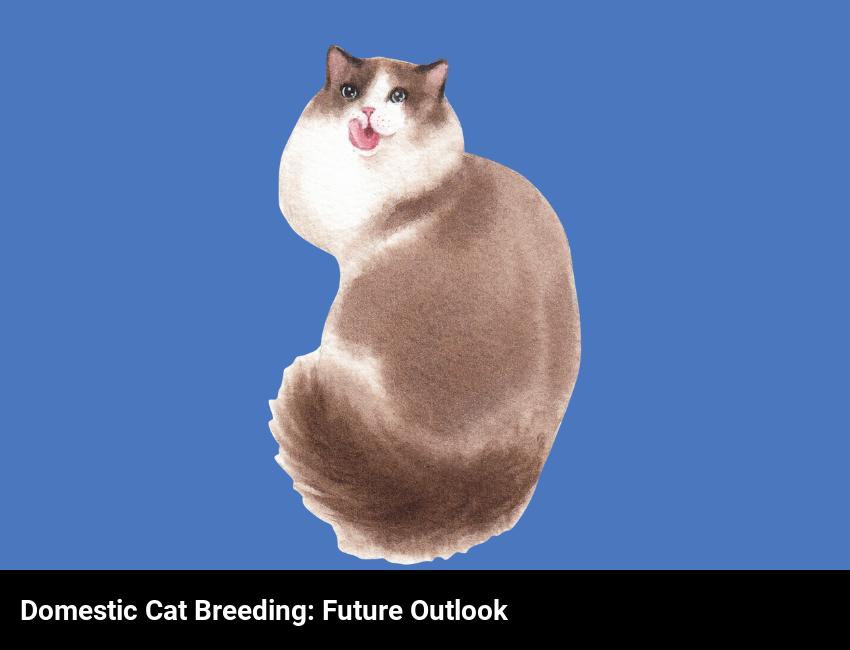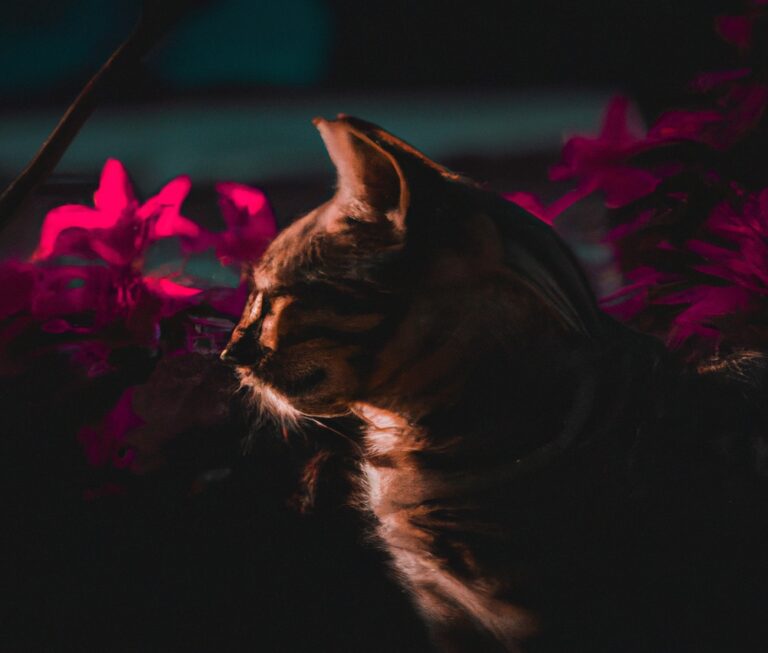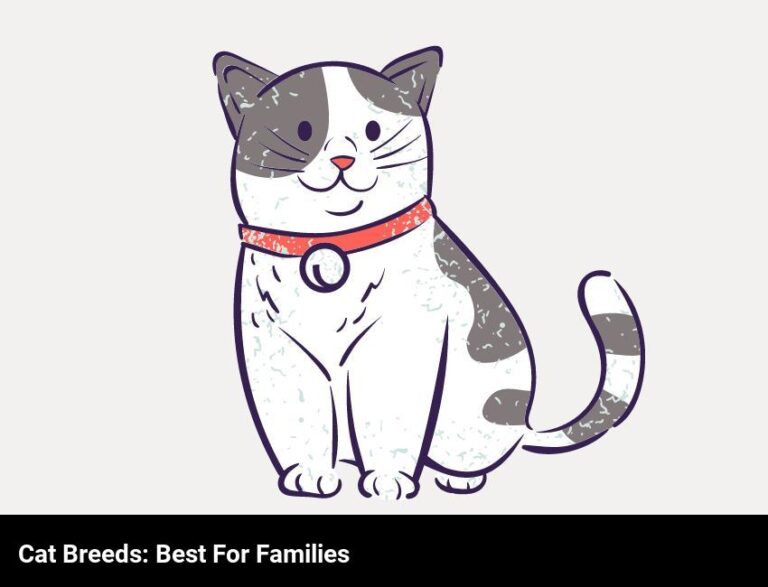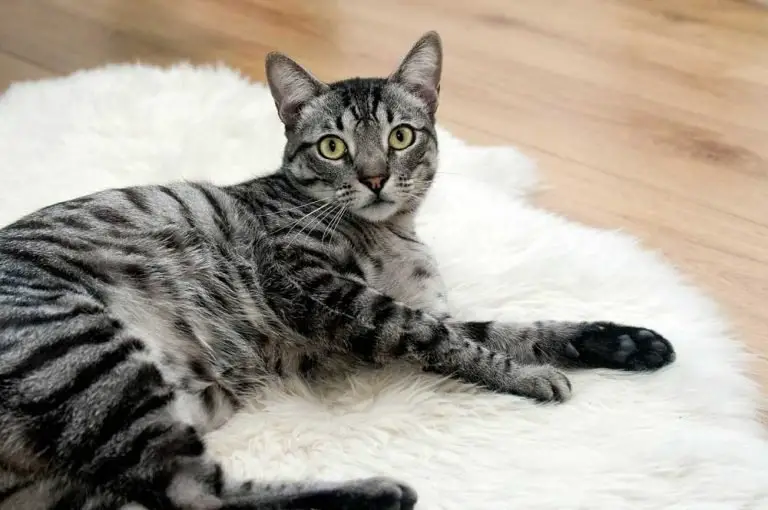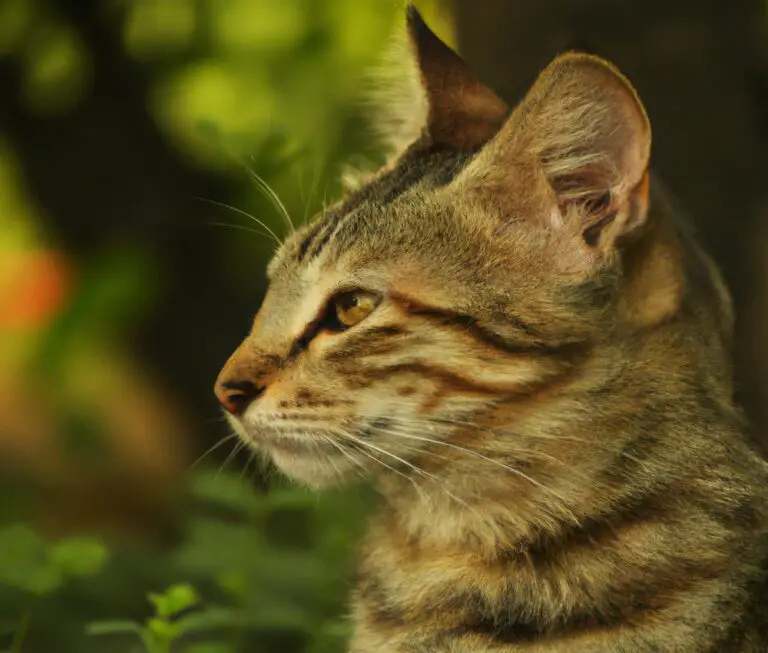The Future Of Domestic Cat Breeding
Domestic cat breeding is expected to continue to be popular in the future, with a focus on preserving certain desirable traits and promoting health and diversity. Advances in technology will help breeders to better understand the genetics of cats and refine their breeding programs.
As a professional cat breeder, I’ve had the privilege of observing the evolution of domestic cat breeding over the years. From a hobbyist operation involving a few people, it has now grown into an industry with a worldwide reach. I’m always amazed at the advances that have been made in the technology of cat breeding – from the sophisticated genetic testing that is now commonplace to the development of specialized diets.
I’m also fascinated by how the demand for certain cats has changed over the years. The ‘designer cats’ of the 1980s still have a place in the hearts of many enthusiasts, but there are now new breeds emerging as well as hybrids created from traditional breeds. It’s an exciting time for anyone involved in this industry.
I’d like to share my insights on the future of domestic cat breeding, from the perspective of a professional cat breeder. I’ll be exploring topics such as what types of cats are currently popular in the breeding world, the potential benefits of modern breeding, what ethical considerations need to be taken into account and how the challenges of breeding cats have been solved.
What types of cats are currently popular in the domestic breeding world?
If you’re looking for the purr-fect feline companion, the current trend in domestic cat breeding is for the cats to have unique personalities and distinct looks. You can find cats with striking colors and patterns, from the exotic Bengal to the unusual Ocicat. If you prefer a more traditional look, you can find cats with solid colors like the British Shorthair or Maine Coon.
But it’s not just the looks that make cats so popular. They are also bred for their personalities, giving each breed its own unique characteristics. For example, the Russian Blue is known for its calm and gentle demeanor, while the Siamese is known for its outgoing and affectionate nature.
If you’re looking for an intelligent and active cat, you might want to consider the Tonkinese, which is a cross between the Siamese and the Burmese. Or the Devon Rex, which is known for its playful and mischievous personality.
Finally, if you’re looking for a cat with a bit of a wild side, the Bengal is the breed for you. This hybrid breed is a mix of the Asian Leopard Cat and the domestic shorthair, and is known for its adventurous spirit and love of water.
No matter what breed of cat you’re looking for, there is sure to be one that will fit your lifestyle perfectly. With so many varieties to choose from, you’re sure to find the perfect furry friend for you.
What are the potential benefits of modern cat breeding?
You may be wondering what the potential benefits of modern cat breeding are. Well, in a world of constantly advancing technology and shifting trends, the answer may surprise you!
When it comes to modern cat breeding, there are many potential benefits for you and your kitty. Here are some of the advantages that come with modern cat breeding:
- Increased genetic diversity: With modern cat breeding, you can enjoy the benefits of a larger gene pool, which can help to ensure that your cat’s genetic health is maintained.
- Healthier cats: By breeding cats with a focus on health, you can ensure that your cats will have longer lifespans and better overall quality of life.
- Enhanced personality traits: Modern cat breeding can focus on certain personality traits, making it easier to find a cat that’s right for you and your lifestyle.
- Rare traits: By breeding cats with rare traits, you can help to ensure that these unique genetic combinations remain in the gene pool.
- Reduced inbreeding: Modern cat breeding can reduce the chances of inbreeding, which can result in healthier cats and help to keep the gene pool diversified.
Overall, modern cat breeding can help to ensure that you have a healthy, happy cat that fits your lifestyle. Through the combination of new technology and careful breeding practices, modern cat breeders are working to ensure that cats are given the best possible care and attention.
How have advances in technology impacted the way cats are bred?
Advances in technology have had a huge impact on the way cats are bred. With the help of modern technologies, breeders can now understand a cat’s genetic makeup with unprecedented accuracy. This knowledge has enabled breeders to identify which of a cat’s traits are the most desirable, and which are the least desirable, allowing them to selectively breed cats with the ideal traits.
Thanks to advanced genetic testing, breeders can also detect any potential genetic health issues before the cat is even born. This ensures that cats with any genetic health issues are not used for breeding, thus ensuring that future generations of cats remain healthy.
Technology has also changed the way breeders interact with their cats. By using GPS trackers, breeders can monitor the location of their cats and make sure they are safe and sound. Additionally, they can also monitor the health of their cats and make sure they are receiving proper nutrition and exercise.
Finally, technology has made it easier for breeders to find potential buyers for their cats. Through online forums, breeders can connect with buyers from all over the world and can even arrange for the cats to be shipped to their new homes.
All in all, advances in technology have had a dramatic impact on the way cats are bred. Through the use of modern technologies, breeders can understand a cat’s genetic makeup, detect any potential health issues, monitor their cats’ locations and health, and even find potential buyers for their cats.
What do professional cat breeders look for when selecting cats for breeding?
When selecting cats for breeding, professional cat breeders look for animals that have the desired traits. This includes physical characteristics such as fur color, eye color, and body shape, as well as behavioral traits such as friendliness, intelligence, and adaptability. Breeding cats with the desired traits can help ensure that future generations of cats will have the same desirable characteristics.
In addition to physical and behavioral traits, breeders also consider the cats’ health when selecting breeding partners. Cats should be healthy and free of genetic or inherited diseases that could be passed down to their offspring. This is why it is important for breeders to track the lineage of their cats and make sure they are not breeding closely related cats.
Finally, professional cat breeders also look for cats with strong personalities. Cats that are more confident and outgoing are more likely to produce kittens with similar traits. Kittens with outgoing personalities are more likely to be adopted, so this is something that breeders need to consider when making breeding decisions.
By considering these factors when selecting cats for breeding, professional cat breeders can help ensure that future generations of domestic cats will be healthy and have the desired traits that make them so beloved by cat owners around the world.
How has the demand for certain cats grown over the years?
The demand for certain cats has increased over the years and is still growing today. Cat breeds like British Shorthair and Maine Coon are becoming increasingly popular as pets, with many people seeking out these breeds to add to their family. This is due to the fact that these cats have distinctive personalities and unique traits that make them stand out from the crowd.
One of the major factors that has contributed to the growth in demand for these specific cats is their unique coats. British Shorthair cats, for example, have a thick, plush coat that makes them look incredibly fluffy and gives them an endearing quality. Maine Coon cats, on the other hand, are known for their long, luxurious coats that can come in a range of colors and patterns. These cats have an exotic, almost wild look that many people find appealing.
Another factor that has helped to drive up demand for these cats is their various personalities. British Shorthair cats are known for being very friendly and affectionate, and are often referred to as the “lap cats” of the feline world. Maine Coon cats are typically more independent and aloof, but still very loving and loyal. These cats also have a reputation for being very intelligent, making them a great companion for families.
The increase in demand for these cats has also been driven by their popularity in various media outlets. British Shorthair cats and Maine Coon cats have been featured in a variety of television shows, movies, and even online videos. This has helped to spread awareness of these breeds and has increased their popularity among potential pet owners.
Overall, the demand for certain cats has grown significantly over the years. This trend is likely to continue as more people become aware of the unique personalities and appealing traits of cats like British Shorthair and Maine Coon. As a result, these cats are likely to remain popular companions for many years to come.
What ethical considerations should be taken into account when breeding cats?
When considering the ethical implications of breeding cats, there are a few key things to keep in mind. First, it’s important to be aware of the potential for inbreeding, which can lead to health issues and behavioral problems. As such, breeders should ensure that their cats are bred responsibly and not just for profit. Additionally, it’s essential to make sure that cats are bred in a humane and safe environment, such as a reputable cattery, with adequate food, water, and medical care.
It’s also important to consider the responsibility of a breeder to the cats they produce. Breeders should be sure to provide potential owners with all the necessary information about the cats they are selling, including any potential health issues they may have. This helps ensure that cats are placed in the right homes and not just sold to anyone.
Finally, it’s important to consider how the breeding of cats can affect the environment. Many cats carry diseases that can be transmitted to wild populations, so it’s essential to be careful when breeding cats and to ensure that the cats are vaccinated and kept indoors.
Overall, when considering the ethical implications of breeding cats, it’s essential to be aware of the potential for inbreeding and the responsibility of a breeder to the cats they produce, as well as the environmental impact of breeding cats. By being mindful of these considerations, breeders can help ensure that cats are bred responsibly and kept in the right homes.
What methods have been used to ensure the health of cats in breeding programs?
When it comes to ensuring the health of cats in breeding programs, there are several methods that have been used. First, genetic testing is becoming more and more common in cat breeding. This helps detect any conditions that the cats may be predisposed to, so they can be addressed before they become a problem. Second, breeders are now using health screenings to detect any potential problems that cats may have. These screenings can help detect any abnormalities in the cats and allow breeders to address any issues that may arise. Finally, many breeders are now also using environmental enrichment techniques to help ensure that cats are living in a healthy environment. This includes things like providing cats with plenty of toys, perches, and climbing surfaces to keep them physically and mentally stimulated.
These methods, when implemented together, can help ensure the health of cats in breeding programs and ultimately lead to healthier cats in the future. With the implementation of these methods, breeders can help ensure that cats are living in a safe and healthy environment, with the best possible care. This, in turn, can help create future generations of cats that are healthier, stronger, and more resilient.
What challenges have been encountered in the breeding of cats and how have they been solved?
When it comes to breeding cats, there have been a few challenges. The first challenge has been the lack of genetic diversity in certain breeds. This has caused certain breeds to become increasingly inbred, leading to poor health, genetic diseases, and even deformities. The second challenge has been the lack of genetic tracing. A lot of times, breeders will mix and match different genes to create a desired outcome, but don’t always know the origin of the genes or the potential risks that come along with them.
Fortunately, there have been some great solutions to these breeding challenges. One solution is to diversify the gene pool and to research the origins of a potential breeding partner. This will help to ensure that the offspring of a breeding pair will be as healthy and genetically diverse as possible. Another solution is to use DNA testing to trace the ancestry of cats and to identify any hidden genetic diseases or deformities. This can help to prevent undesirable results in the future.
The future of domestic cat breeding is full of possibility. With the right techniques and research, we can create healthy and diverse breeds of cats that will thrive in their environment. By tackling the challenges that have been encountered thus far, cat breeding will only become more successful in the years to come.
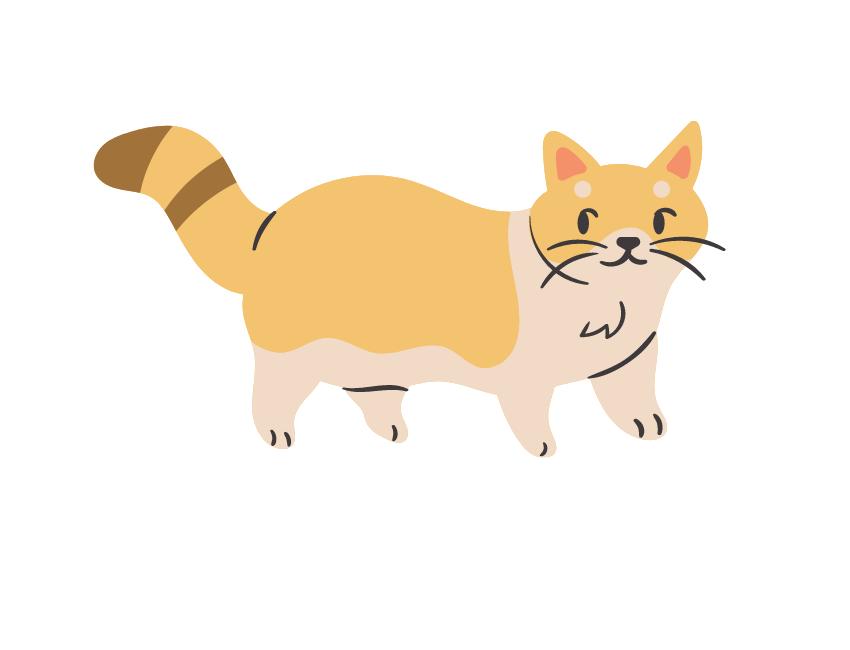
Frequently Asked Questions
What advances in genetic technology could be used to improve cat breeding?
Advances in genetic technology can be used to improve cat breeding in a variety of ways. For example, selective breeding could be done to create cats with desirable traits such as coat color and texture, eye shape, and breed-specific behaviors. Additionally, genetic testing could be used to identify and eliminate genetic diseases and other health issues that can negatively impact cats. With this technology, healthier, hardier cats can be bred and selected for future generations.
Are there any unique opportunities for creating new cat breeds?
Yes! With the help of knowledgeable and experienced cat breeders, creating new breeds of cats is possible. There is potential to use a variety of techniques to create a unique combination of physical characteristics and temperaments. Cross-breeding, selective breeding, and even genetic engineering are all possibilities for creating a one-of-a-kind cat breed. With the right resources and a creative vision, cat breeders can create cats with distinct personalities and appearances.
How can breeders ensure genetic diversity when selecting cats to breed?
When selecting cats to breed, breeders can ensure genetic diversity by using a variety of methods. First, they can select cats from a wide range of geographical locations to ensure genetic diversity. Additionally, they should conduct genetic testing to identify cats with different genetic backgrounds. Furthermore, they should avoid inbreeding to prevent the offspring from inheriting genetic defects. Finally, they should track the pedigree of cats they select to ensure they are not breeding cats that are too closely related.
How could responsible breeding practices benefit current cat breeds?
Responsible breeding practices could benefit current cat breeds by reducing the risk of inherited health conditions, improving the genetic diversity of breeds, and helping maintain desired breed characteristics. Responsible breeding practices also help preserve the welfare of cats, as they involve making sure cats are bred in humane and safe conditions.
What impact could selective breeding have on cats’ personalities and behavior?
Selective breeding can have a significant impact on cats’ personalities and behavior. Cats bred for specific characteristics, such as agility or sociability, may display more of those traits than cats bred for other characteristics. This can lead to cats that are more easily trained and better adapted to certain environments. Additionally, variations in breed can result in cats with different temperaments and activity levels.

